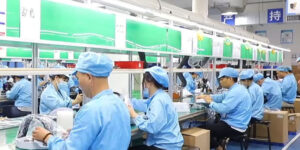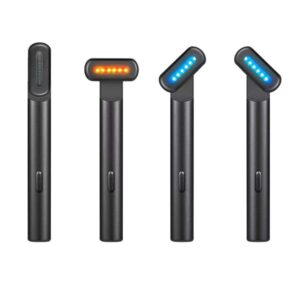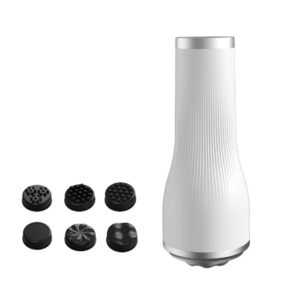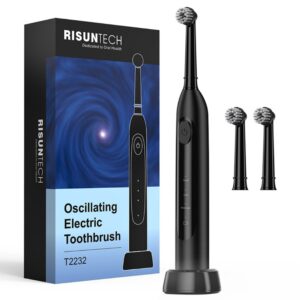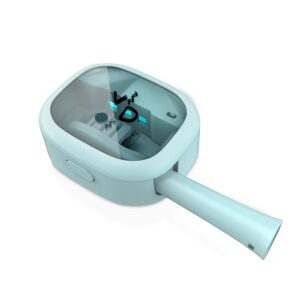Summary
Scalp care devices are increasingly trending in the beauty and wellness industry, driven by a growing awareness of the importance of scalp health in relation to hair growth and overall hair wellness. Historically overlooked, the scalp has become recognized as a critical component of hair care, prompting consumers to seek specialized devices designed to address various scalp conditions, such as dryness, oiliness, and dandruff. This shift has led to a significant expansion in the market for scalp care products, characterized by innovations that leverage technology for enhanced user experiences and personalized treatment options.
The rising popularity of these devices has been further fueled by societal changes, including greater openness regarding issues such as hair loss and scalp health, exacerbated by factors like the COVID-19 pandemic. This has prompted a broader dialogue around self-care and the importance of maintaining a healthy scalp. The emergence of social media influencers and platforms that promote hair and scalp wellness has also played a pivotal role in shaping consumer behavior and preferences, particularly among younger demographics seeking effective solutions for hair-related concerns.
Technological advancements, including AI-driven diagnostics and smart devices with customizable settings, have revolutionized the scalp care landscape. These innovations cater to a diverse consumer base by offering tailored treatments that meet individual needs. The market for scalp care devices is projected to continue its upward trajectory, reflecting a holistic approach to beauty and wellness that encompasses both physical and mental well-being.
However, the growing popularity of scalp care devices is not without controversy. Many devices utilizing low-level laser therapy (LLLT) have received FDA clearance based on minimal evidence, raising concerns about their efficacy and safety. Critics argue that this regulatory pathway may lead consumers to invest in products without a clear understanding of their true effectiveness. Additionally, ongoing debates regarding the optimal treatment parameters and quality of supporting studies further complicate the landscape, highlighting the need for more robust research to substantiate claims surrounding these technologies.
Table of Contents
Historical Context
The trend towards scalp care devices has emerged as a response to a shifting understanding of hair health and wellness. Historically, hair care predominantly focused on the hair strands themselves, often neglecting the scalp, which plays a crucial role in overall hair health. However, as consumers have become more aware of the interdependence between scalp health and hair growth, the market for specialized scalp care products and devices has expanded significantly.
Evolution of Scalp Care Awareness
Over the past few years, there has been a notable cultural shift regarding previously taboo subjects such as hair loss, menopause, and overall scalp health. The stress of the COVID-19 pandemic, along with studies linking hair loss to the virus, has prompted a broader conversation about these issues, making scalp care more mainstream. This evolution has led to a growing interest in products and devices specifically designed to target scalp-related concerns, fueled by an increase in consumer demand for effective, self-care solutions.
Technological Advancements
The rise of technology in beauty and personal care has also influenced the scalp care landscape. Innovations such as AI-driven diagnostics and advanced scalp massaging devices have begun to capture consumer interest, with a reported 34.3% year-on-year growth in popularity across social media platforms like Google and TikTok. These advancements have made it possible for individuals to personalize their scalp care routines, further driving market growth and consumer engagement.
Market Growth Factors
Various factors have contributed to the increasing prevalence of scalp-related issues, including environmental changes, urbanization, and lifestyle choices, which have led to a rise in scalp disorders. As consumers seek remedies for these conditions, the market for scalp care devices is projected to grow significantly, reflecting a shift towards prioritizing scalp health as an integral part of personal care routines. Major players in the industry are continuously innovating to meet the evolving needs of consumers, indicating that the trend is likely to continue gaining momentum in the foreseeable future.
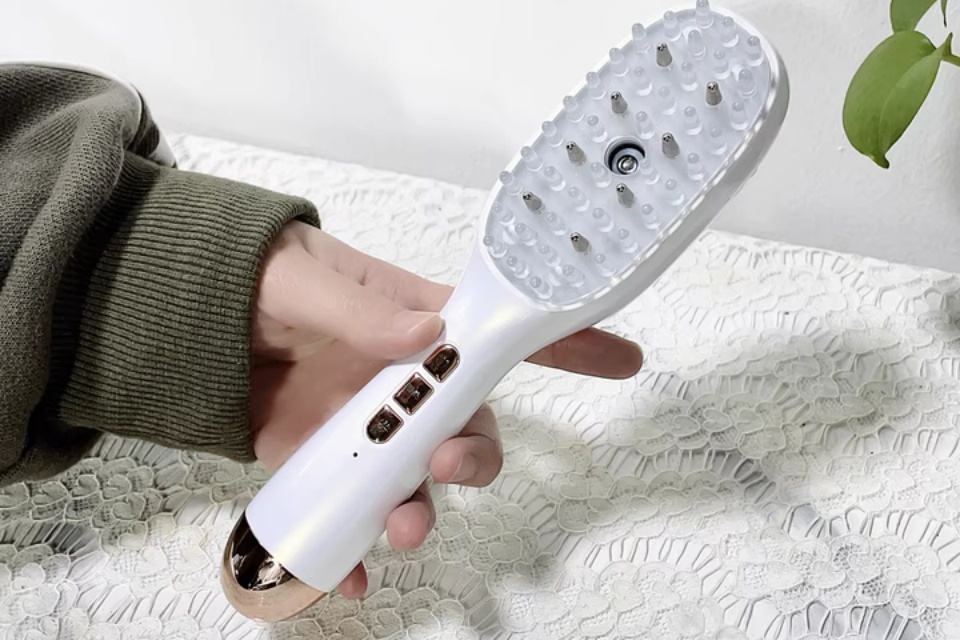
Types of Scalp Care Devices
Scalp care devices have gained popularity for their ability to promote scalp health, enhance hair growth, and provide relaxation. These devices can be broadly categorized into several types, each offering unique features and benefits.
Professional Devices
Professional use of scalp care devices is prevalent in salons, spas, and dermatology clinics, where advanced technologies are employed to address specific scalp and hair concerns. Commonly utilized devices include laser hair growth machines and electric scalp massagers, which are designed to deliver therapeutic benefits and enhance the overall client experience. The increasing demand for personalized and premium scalp care services has driven the growth of this segment, as consumers seek effective solutions that promise visible and long-term results.
Laser Therapy Devices
Laser therapy devices are a rapidly growing segment within the scalp care market, particularly known for their efficacy in promoting hair regrowth and treating conditions such as androgenetic alopecia. These devices employ low-level laser therapy (LLLT) to stimulate hair follicles and increase blood flow, leading to healthier hair growth. Clinical studies have demonstrated the positive effects of LLLT, contributing to its acceptance as a non-invasive alternative to traditional pharmaceutical treatments and surgical options. Both professional-grade and home-use versions are available, catering to a diverse range of users and budgets.
Manual Scalp Care Devices
Manual scalp care devices, including brushes, combs, and exfoliating tools, maintain a significant market share due to their simplicity, affordability, and ease of use. These devices are particularly favored by consumers who prefer traditional methods of scalp care or wish to complement their existing hair care routines. Dermatologists often recommend manual devices for improving scalp circulation, removing buildup, and enhancing the efficacy of topical products. The variety in designs, materials, and price points ensures that there are options available for different consumer preferences.
Innovative and Specialized Devices
The “Others” category encompasses a range of innovative scalp care devices, such as micro-needle rollers, infrared therapy devices, and combination devices that integrate multiple treatment modalities. These products often target niche consumer segments, such as individuals with chronic scalp conditions or those recovering from hair restoration procedures. The introduction of customizable and targeted solutions within this segment contributes to market differentiation, addressing the evolving demands of informed consumers.
Smart and Technologically Advanced Devices
Technological innovation plays a crucial role in the growth of the scalp care device market. Companies are increasingly investing in research and development to create next-generation devices that feature customizable massage settings, AI-driven scalp analysis, and wireless connectivity. These smart technologies allow users to monitor their scalp health, track usage patterns, and receive personalized recommendations, significantly enhancing the overall user experience. Furthermore, collaborations between device manufacturers and dermatologists or trichologists are resulting in clinically validated products that reinforce consumer trust in these advanced solutions.
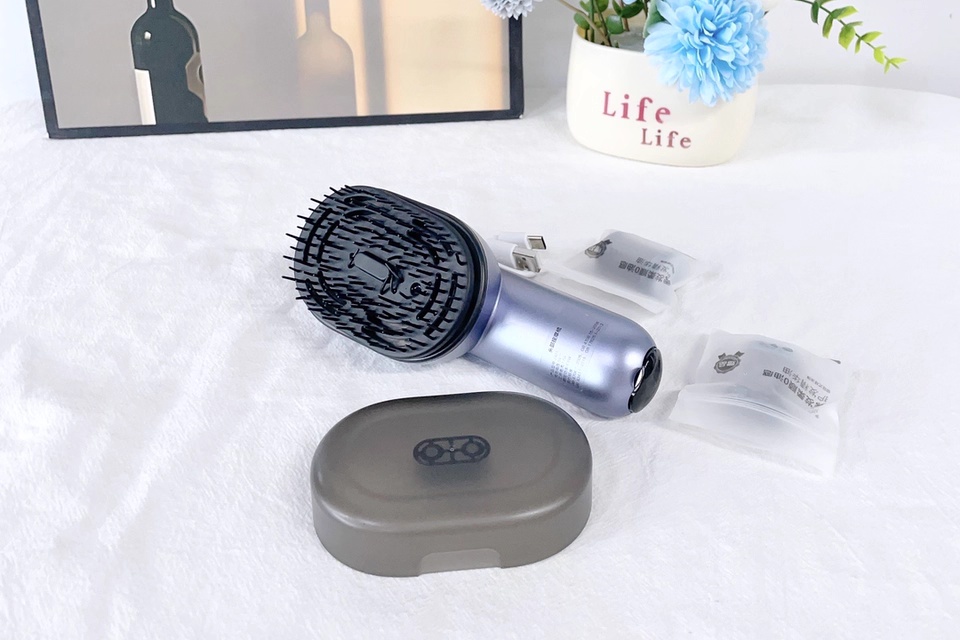
Benefits of Scalp Care Devices
Scalp care devices offer a variety of therapeutic benefits aimed at improving overall scalp health, addressing specific issues such as dandruff, scalp infections, and inflammation. The rising awareness of the importance of maintaining a healthy scalp as a foundation for hair health has contributed significantly to the demand for these devices.
Enhanced Scalp Health
Regular use of scalp care devices, such as LED therapy devices and scalp massagers, has been shown to promote better scalp health. These devices not only help alleviate common scalp problems but also provide a soothing experience that contributes to a tranquil mind, making them an essential component of self-care routines. Additionally, targeted treatments can improve circulation in the scalp, facilitating the delivery of oxygen and essential nutrients to hair follicles, which is crucial for healthy hair growth.
Addressing Specific Scalp Issues
With the increasing prevalence of scalp-related issues due to environmental stressors and lifestyle changes, specialized scalp care devices are becoming more popular. These devices can provide effective remedies for conditions exacerbated by factors such as pollution, stress, and dietary imbalances. For instance, some devices utilize electrical impulses to stimulate blood flow and promote cellular activity, which can significantly enhance scalp health.
Synergy with Hair and Scalp Care Products
The combination of scalp care devices with high-quality hair and scalp care products can further amplify their effectiveness. Products designed to target scalp health often include ingredients that nourish the scalp and promote hydration, complementing the benefits of mechanical stimulation provided by the devices. This synergy not only improves scalp health but also enhances customer satisfaction, leading to increased loyalty and repeat purchases.
Scientific Support for Efficacy
Clinical studies have demonstrated the effectiveness of scalp treatment devices in promoting hair growth and improving scalp conditions. For instance, low-level laser therapy (LLLT) has been shown to stimulate the anagen phase of hair follicles, resulting in thicker and healthier hair strands. Furthermore, studies highlight the role of scalp exfoliation in creating a healthy environment for hair follicles, thereby supporting hair growth.
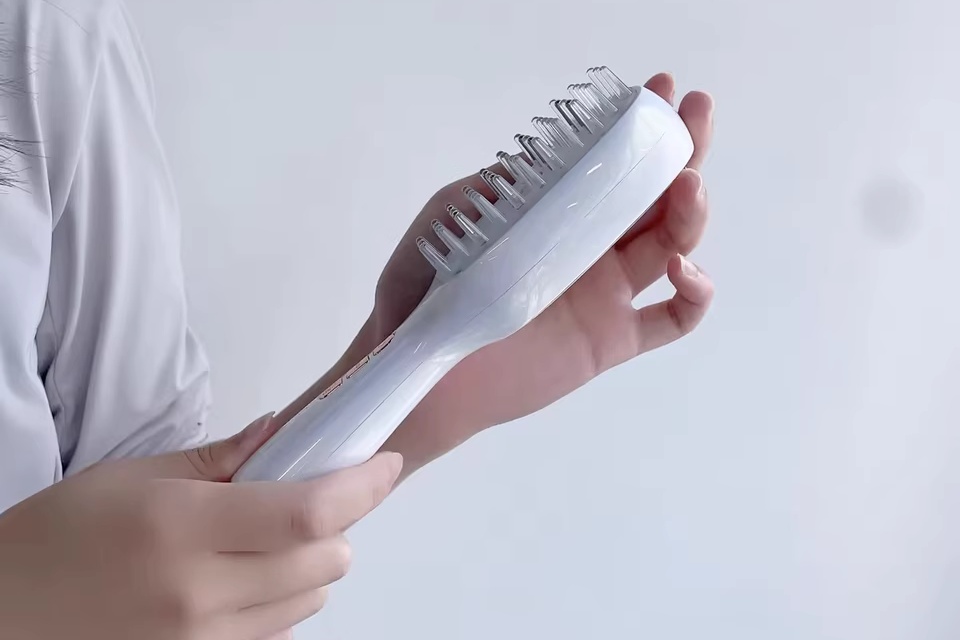
Consumer Trends
Influences on Purchase Decisions
Consumers are increasingly influenced by a variety of factors when it comes to purchasing scalp care devices. Emotions, motivation, income, lifestyle, opinions, and cultural background play critical roles in shaping consumer behavior and decision-making processes. Moreover, positive reviews, testimonials, and a brand’s reputation significantly impact consumer trust and their likelihood of making a purchase.
Retail Environment
Supermarkets and hypermarkets have emerged as vital distribution channels for scalp care devices, particularly in areas with robust retail infrastructure. These venues offer advantages such as in-store demonstrations, immediate product availability, and opportunities to compare different brands and models. Collaborations between retailers and device manufacturers for promotional campaigns and bundled offers enhance product visibility and stimulate impulse purchases. The tactile shopping experience, supported by knowledgeable sales staff, appeals especially to consumers who prefer to interact with products before committing to a purchase.
Consumer Awareness and Trends
The rising awareness regarding hair health and aesthetics has led to an increased interest in advanced hair care devices. Social media and beauty influencers have played a crucial role in promoting hair care routines and non-invasive solutions, further encouraging consumers to explore scalp care options. This trend is particularly noticeable among younger demographics, such as Millennials and Gen Z, who are more open to adopting new beauty and wellness practices.
Demographic Considerations
The market for scalp care devices also reflects a diverse consumer base that ranges from individuals seeking everyday maintenance to those addressing specific scalp issues. The prevalence of scalp-related problems, combined with a growing focus on preventive care, has motivated consumers to invest in devices that promise convenience and efficacy. Interestingly, despite hair loss being more common among older women, younger women display a greater willingness to consider treatment options, indicating shifting attitudes towards scalp health across different age groups.
Packaging and Value
Packaging plays a significant role in consumer preferences, as it represents the first point of contact between consumers and products. Brands that invest in attractive and functional packaging are often more successful in attracting customers. Additionally, while price remains a critical factor in purchase decisions, consumers are increasingly evaluating the overall value offered by a product, including longevity and usability, which impacts repurchase intentions.
The Role of Professional Recommendations
Hair professionals also influence consumer behavior significantly. A notable portion of consumers rely on hairstylist recommendations when choosing hair care products, highlighting the importance of expert advice in the decision-making process.
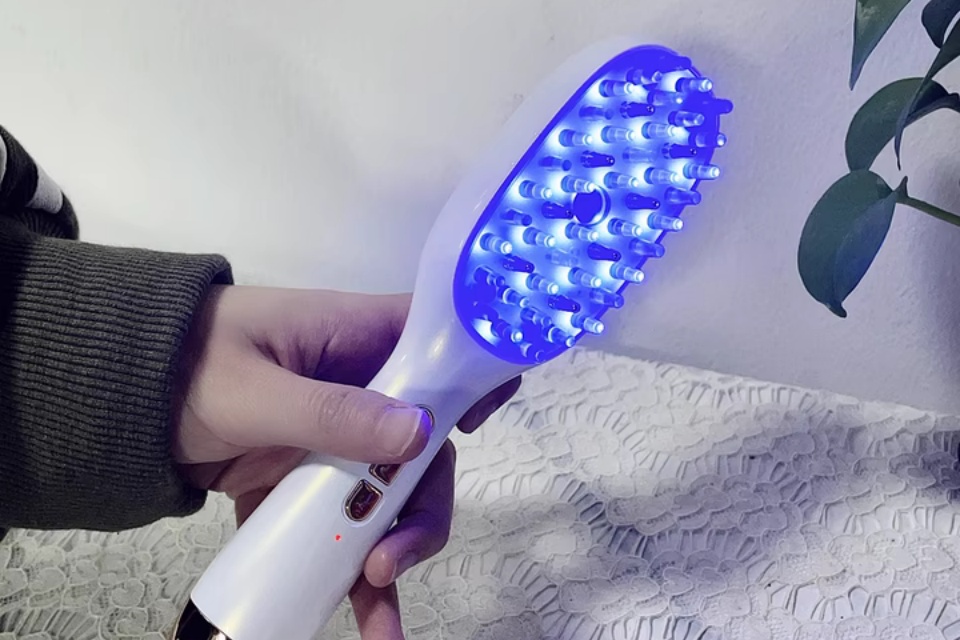
Influences on Trends
The increasing popularity of scalp care devices is driven by a multitude of factors that shape consumer preferences and market dynamics.
Consumer Awareness and Health Trends
A significant catalyst for the rising interest in scalp care devices is the growing consumer awareness regarding hair health and aesthetics. As personal grooming becomes more prioritized, individuals are increasingly turning to advanced hair care solutions that effectively address various scalp issues, including dryness, oiliness, and dandruff. This shift is also influenced by the harmful effects associated with chemical treatments, leading consumers to seek non-invasive alternatives that promote scalp health.
Social Media and Influencer Impact
Social media platforms and beauty influencers play a crucial role in driving demand for scalp care products. Influencers often promote specific brands and routines, which can lead to increased consumer interest and sales. For example, in China, lifestyle key opinion leaders (KOLs) have highlighted the importance of scalp health, fostering a community of engaged consumers interested in functional hair care solutions. The visibility and reach of these influencers can significantly shape consumer perceptions and create trends around scalp care devices.
Technological Advancements and Innovation
Technological innovations in the hair and scalp care market also contribute to the trend. The integration of artificial intelligence (AI) and automation into product offerings has made hair care solutions more personalized and efficient, attracting a wider range of consumers. Startups and disruptors are capitalizing on these advancements to provide tech-enabled services that resonate with consumers looking for modern solutions.
Market Demographics and Consumer Behavior
Shifts in demographics and urbanization are creating new demand patterns for scalp care devices. The rising prevalence of hair-related issues such as alopecia and hair thinning across various demographic groups further fuels this demand. As disposable income increases, more consumers are integrating scalp care devices into their grooming routines, highlighting a broader trend towards self-care and wellness.
Holistic Wellness and Mental Health Focus
Moreover, there is an emerging focus on holistic wellness within the scalp care industry. Head spas are adapting by incorporating therapies that not only promote physical relaxation but also address mental well-being. Techniques such as guided meditation and nutritional education are being integrated into service offerings, reflecting a growing consumer preference for comprehensive wellness experiences. This emphasis on holistic approaches further enhances the appeal of scalp care devices as part of a broader self-care regimen.
E-commerce and Accessibility
The rise of e-commerce has also lowered barriers to entry for smaller players in the market, enabling them to reach a global audience and compete with established brands effectively. This accessibility has led to increased competition and innovation, with companies focusing on diversifying their distribution channels to meet evolving consumer demands.
As these influences converge, the scalp care device market is expected to continue its upward trajectory, with trends driven by consumer preferences, technological advancements, and the integration of wellness-oriented practices.
Criticisms and Controversies
The increasing popularity of scalp care devices, particularly those utilizing low-level laser therapy (LLLT) and red light therapy, has not been without criticism and controversy. Many of these devices have received 510(k) clearance from the U.S. Food and Drug Administration (FDA), which allows manufacturers to bring products to market without the extensive safety and efficacy studies required for full approval. Critics argue that this process can lead to devices that are marketed based on minimal evidence, potentially leaving consumers uninformed about their true effectiveness.
Moreover, while there is some evidence supporting the benefits of LLLT for hair growth and inflammation reduction, there remain significant questions regarding the optimal strength and duration of treatment needed for efficacy. Many consumers purchase these devices with the hope of achieving substantial results, only to find that the scientific understanding of these treatments is still evolving. This lack of clarity can breed skepticism and lead to frustration among users, particularly those who have cycled through multiple therapies without success.
Additionally, concerns have been raised about the quality and methodology of studies evaluating these devices. For instance, the methodological quality of randomized controlled trials (RCTs) that assess LLLT effectiveness has been scrutinized, with many studies featuring small sample sizes and potential biases in their designs. This casts doubt on the reliability of their findings and suggests that further research is necessary to establish robust evidence of efficacy.
In terms of user experience, some patients express apprehensions regarding the use of topical treatments in conjunction with these devices, as they may question whether specific formulations, such as foams versus creams, adequately cover the scalp. This complexity in treatment regimens can deter consistent use and adherence, which are critical for achieving desired outcomes.


